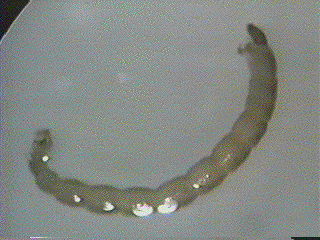
Below is a hypothesized phylogeny of the
hexapods that have aquatic groups. You do not need to
memorize this phylogeny, but it is to
show that "aquatic insects" are in fact a diverse group of
organisms. These groups are believed to
have secondarily invaded freshwater environments from
their terrestrial ancestors - in fact,
almost all of these organisms breath atmospheric oxygen during at
least one stage or more of their life
history. Many different strategies towards surviving in water
have been developed, especially in terms
of respiration, feeding habitats, life stage, behaviors, etc.
Hexapoda
Order
|
|-----Class and Order Collembola (mouthparts
partially internalized)--------*Collembola (springtails)
|
|-----Class Insecta (mouthparts well developed)
|
|---Division (and order) Ephemeroptera-----------------------------------------*Ephemeroptera
(mayflies)
|---Division (and order) Odonata---------------------------------------------------*Odonata
(dragon- & damselflies)
|
|-----Zygoptera (damselflies)
|
|---|
|
|--Anisozygoptera (not in Michigan)
|
|--Anisoptera (dragonflies)
|
|----Division Neoptera (folds wings behind back, wings maybe secondarily
lost)
|
|-----?plecopteroid assemblage--------------------------------------------*Plecoptera
(stoneflies)
|-----hemipteran assemblage (Subdivision Paraneoptera)
| |
| |------Hemiptera
(true bugs) (piercing-sucking mouthparts)
|
|---other hemipterans
|
|--------------------------------------------------------------*Heteroptera
|
|---Gerrimorpha
|
|---Nepomorpha
|
|----Subdivision Endopterygota - wing sheaths develop within body of pupa,
holometabolous life cycle
|
|
|------------------Neuroptera (spongillaflies)
|
|---------------|
|----------------------------------------|
|------------------*Megaloptera (dobson-, alder- & fishflies)
|
|
|
|----------------------------------*Coleoptera (beetles)
|
|
|
|-------------------------------------------Hymenoptera (wasps)
|
|
|-------------------------------|
|
|-------------*Trichoptera (caddisflies)
| |-------------------------|
|---|
|-------------Lepidoptera (moths & butterflies)
|
|---------------------------------------*Diptera (true flies)
checklist of the Collembola -->http://www.geocities.com/~fransjanssens/
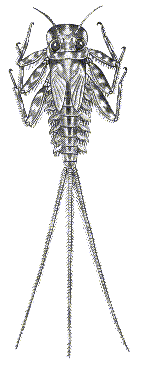
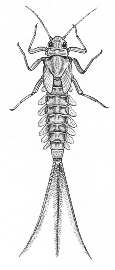
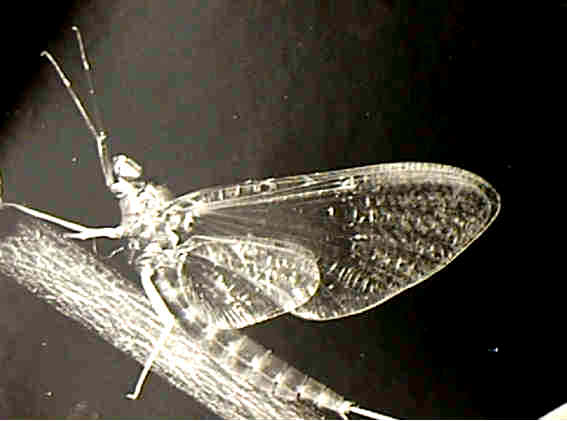
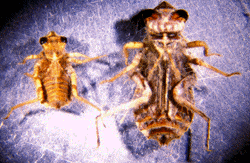 (c) 1998, Ethan Bright
(c) 1998, Ethan Bright 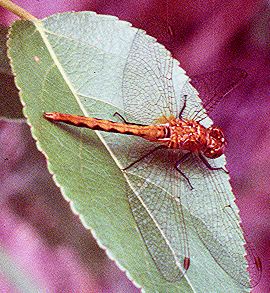 (c) Mark O'Brien
(c) Mark O'Brien
more about Odonata:
detailed list of links: http://www.capecod.net:80/~bnikula/on4.htm
systematics: http://phylogeny.arizona.edu/tree/eukaryotes/animals/arthropoda/hexapoda/odonata/odonata.html
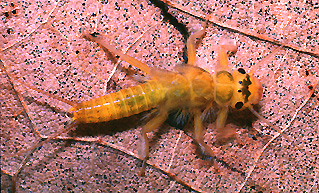
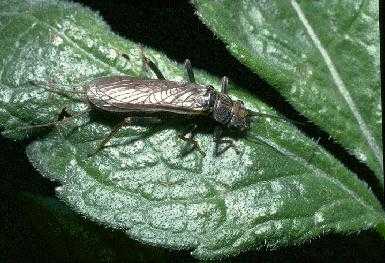
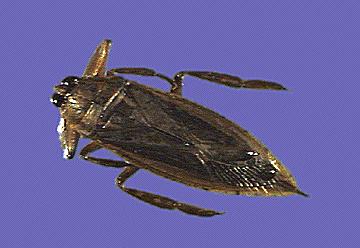 ©Biodidac
©Biodidac 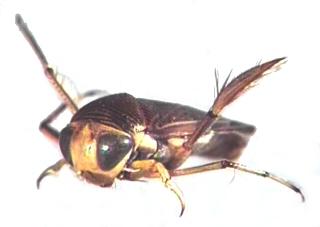 Photograph by E.
Dunbar
Photograph by E.
Dunbar
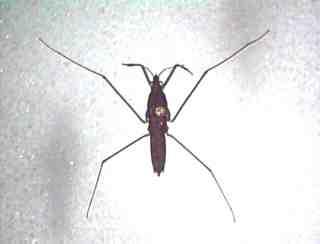 Photograph
by E.
Dunbar
Photograph
by E.
Dunbar
- hemimetabolous (paurametabolous
- nymph very similar to adult, with gradual change to mature adult stage)
- functional wings
- front half of fore wing hardened
- many hold air supply
in "air bubble" under wing, others use "siphon" to breath air directly
from atmosphere
- most predacious,
some genera in family Corixidae often detritivores, algivores as well as
predators
- have a "beak," piercing-sucking
mouthparts which they dump digestive fluid into prey and suck it back out
- WILL BITE
- 2 tarsal claws
- Common families:
Corixidae, Belostomatidae, Nepidae, Gerridae, Notonectidae
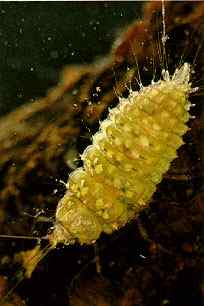
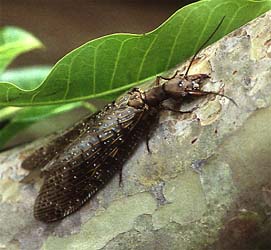
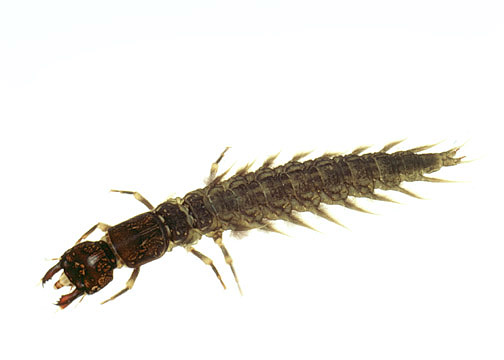 ©1997
Thomas Ames Jr.
©1997
Thomas Ames Jr.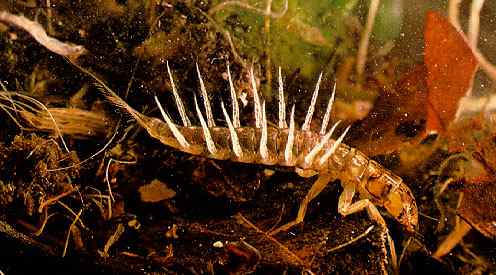 Sialis larva
: source >>http://140.211.62.101/aquaticinsects/aqinsect.html
Sialis larva
: source >>http://140.211.62.101/aquaticinsects/aqinsect.html
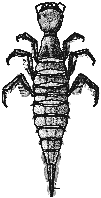
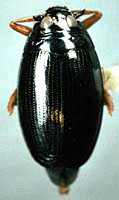
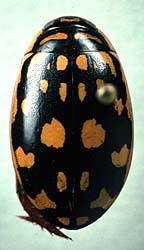
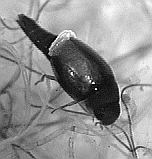
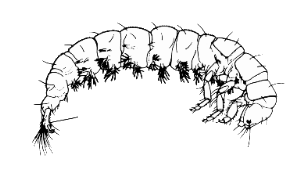
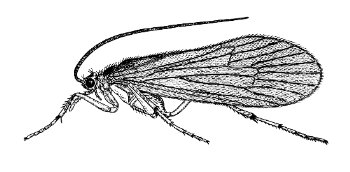
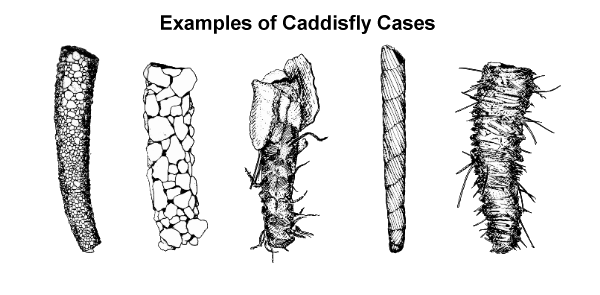
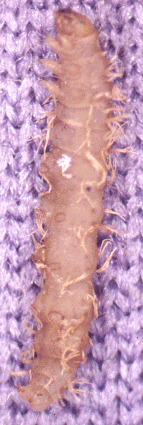 source
of picture: >>http://www.lcra.org/lands/watershedmanagement/arcbmlis.htm
source
of picture: >>http://www.lcra.org/lands/watershedmanagement/arcbmlis.htm
- holometabolous, egg,
larvae and pupae usually aquatic
- no cerci or chewing
mouthparts in adults like trichopterans
- larvae with 3-6 prolets
ringed with fine hooks on abdominal segments
- one common family
in Michigan in freshwaters - Pyralidae
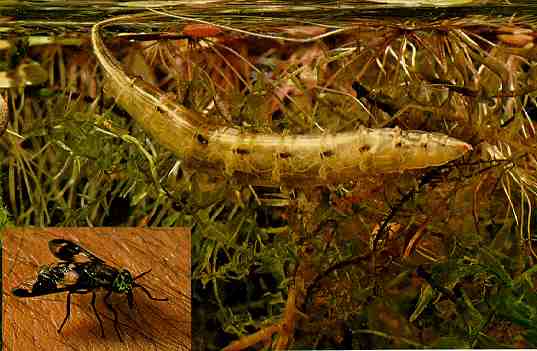
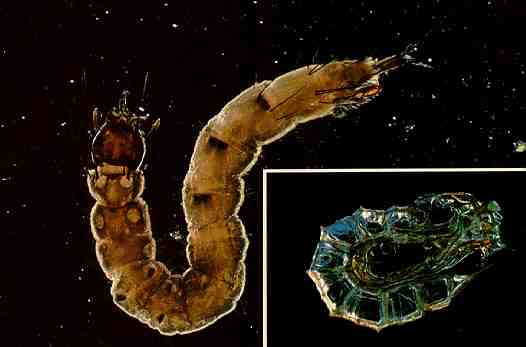
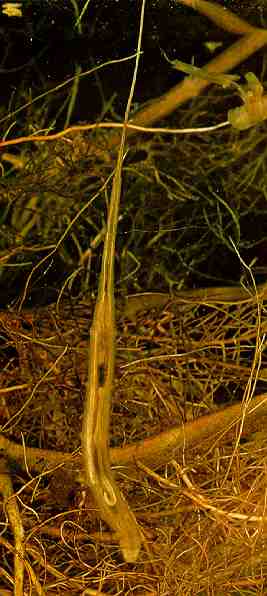
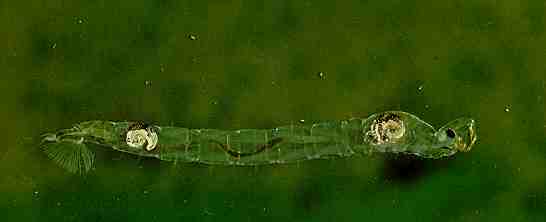
- holometabolous, egg,
larvae and pupae are aquatic
- adults with only
1 pair of legs, metathorax with club like balancing structure (halteres)
- thorax without segmented
legs
- prolegs, pseudopods,
and creeping welts are frequent structures on larval body
- larvae with almost
no sclerotization
- usually primary consumers,
but some are also detritivores, shredders and predators
- four very common
dipteran families in Michigan freshwaters:
- Chironomidae - non-miting midges

- larvae usually white, or clear, but some with hemoglobin and appear red
(blood midges)
- head capsule scleritized, body soft
- thoracic and anal prolegs
- adult looks similar to mosquito
- most speciose family of aquatic insects (20,000 species?), often most
numerous single
type of aquatic insects, hence often plays an extremely important role
in food chains
- primary consumers (algae), shredders, detritivores, carnivores
- Tipulidae - crane flies

- larvae worm- or maggot-like
- tiny head retracted into thorax
- adults have long wings and legs ("daddy long legs mosquito")
- largest dipteran family, most species are terrestrial but many aquatic
genera
- shredders, carnivores
- Simulidae - black flies
![]()
- larvae "bulb-shaped" with sclerotized head
- thorax with large proleg
- head with large fans that allow filter-feeding of algae, usually lotic
waters
- adults often require blood meal, can emerge in huge numbers
- associated with some diseases in Africa
- Culicidae - mosquitos
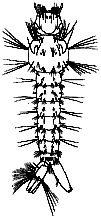
- larvae have anal syphon for breathing atmospheric air
- head is distinct from segmented body
- filter feeders
- lentic waters of many types, can occur in high densities, do not do well
in moving waters
- adults often require blood meal, often associated with many diseases
worldwide